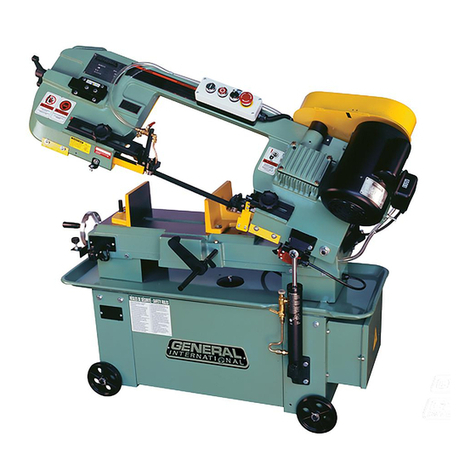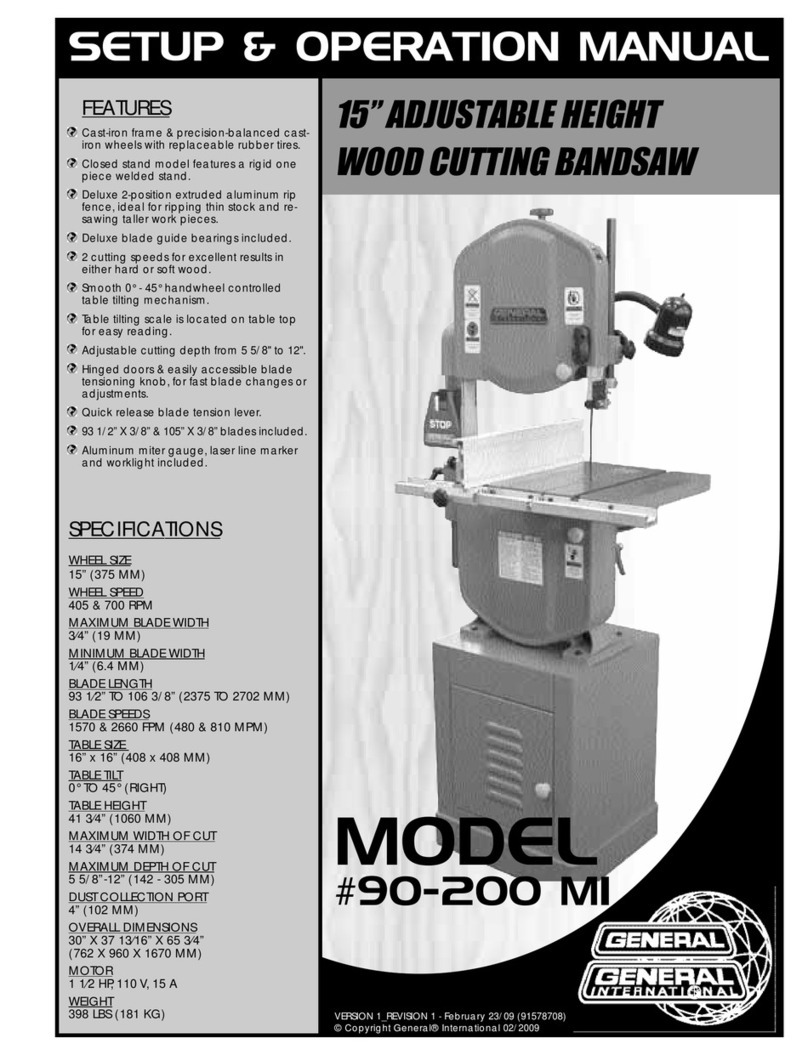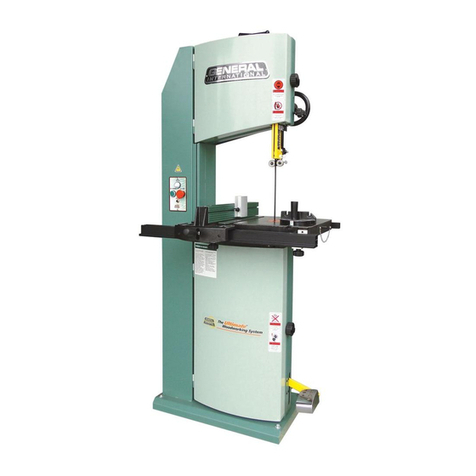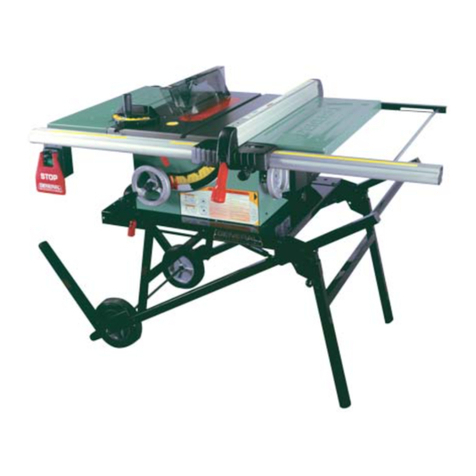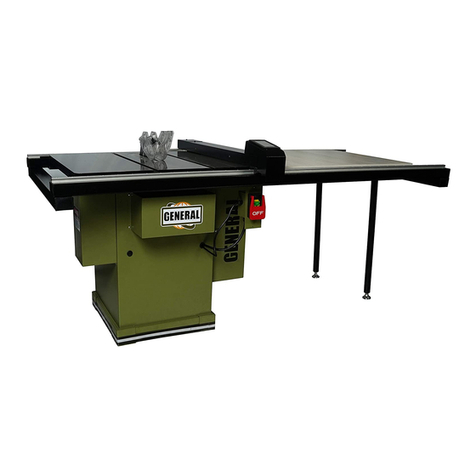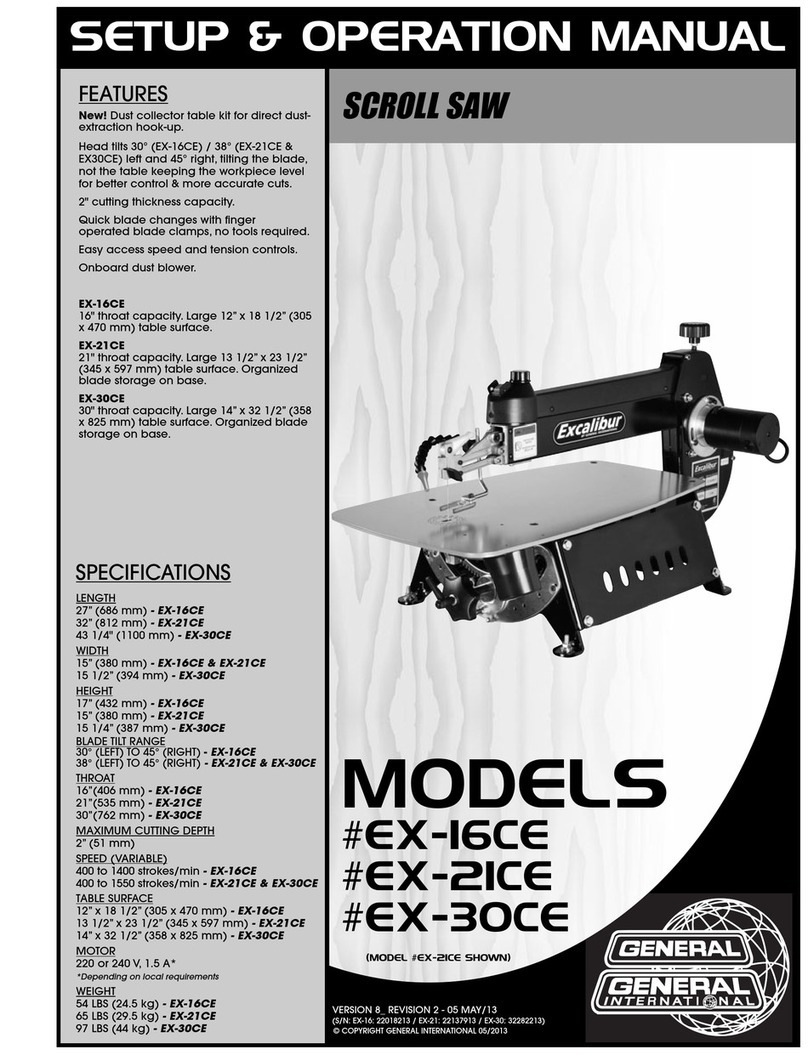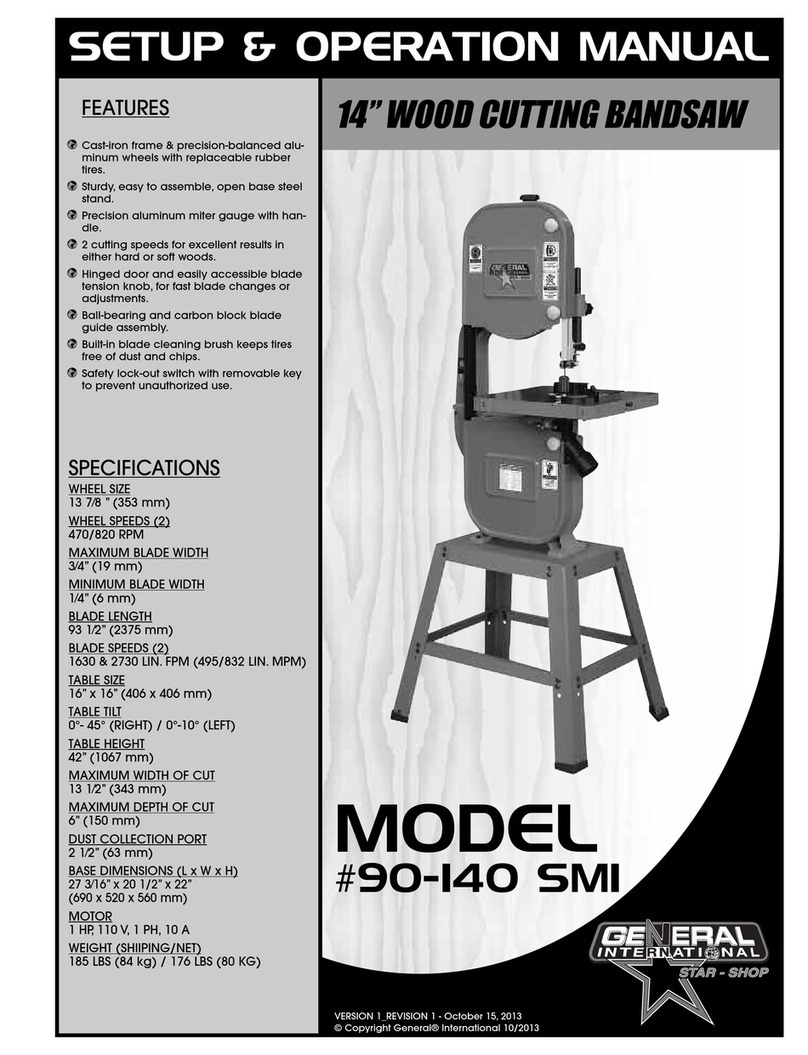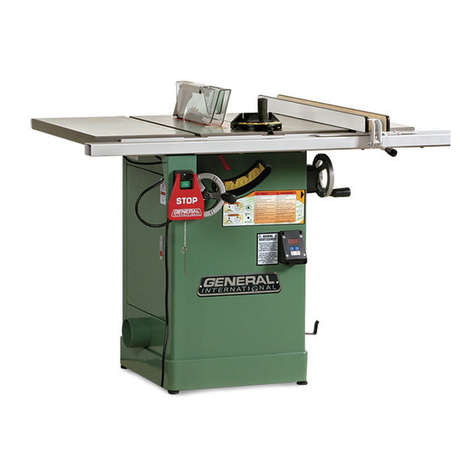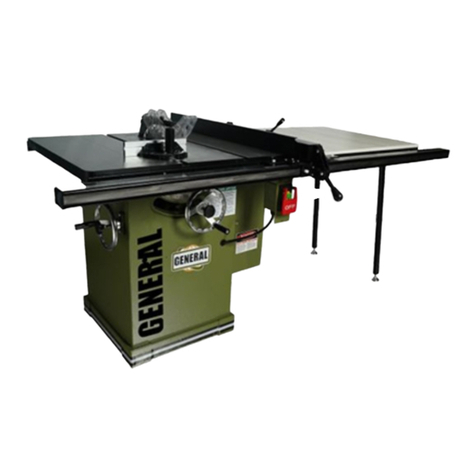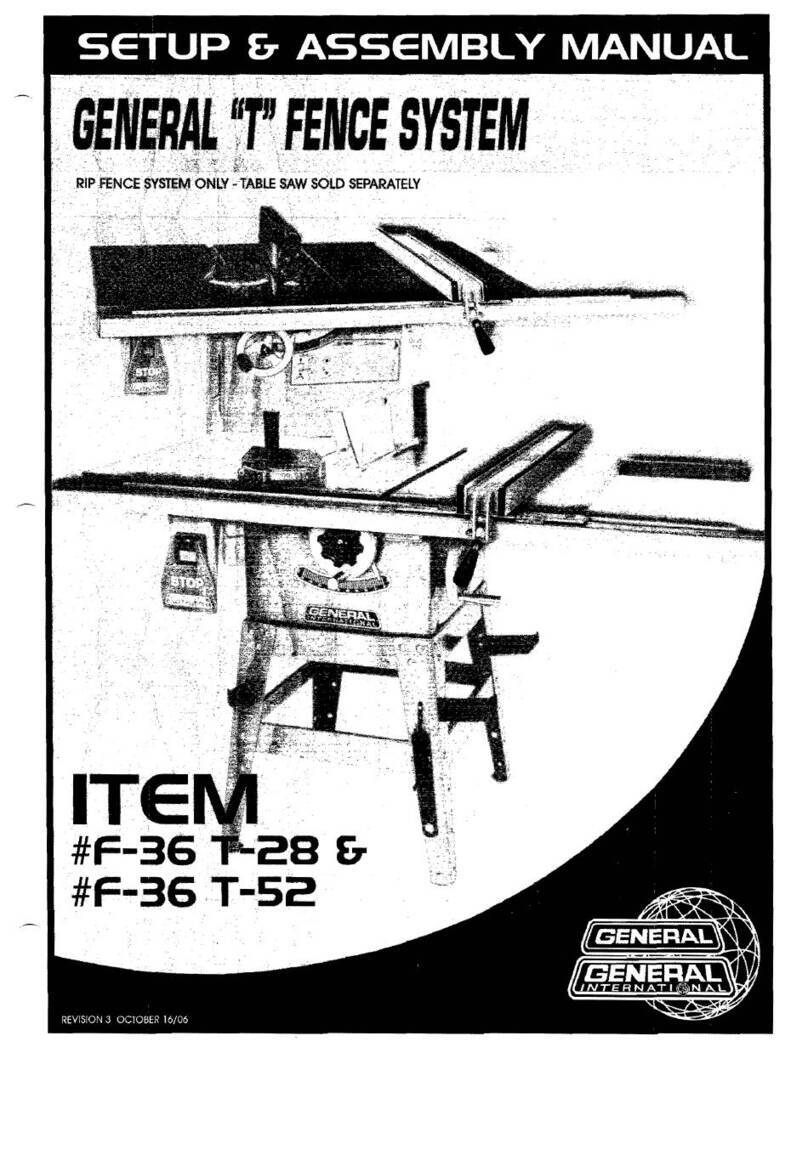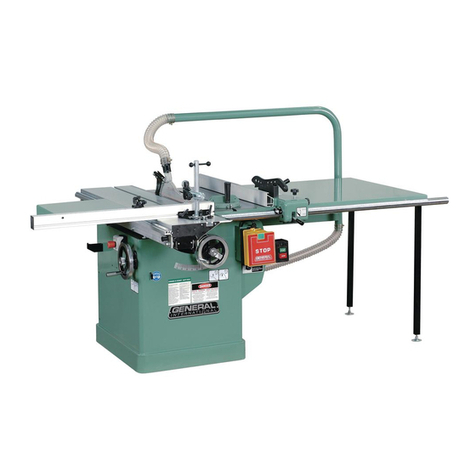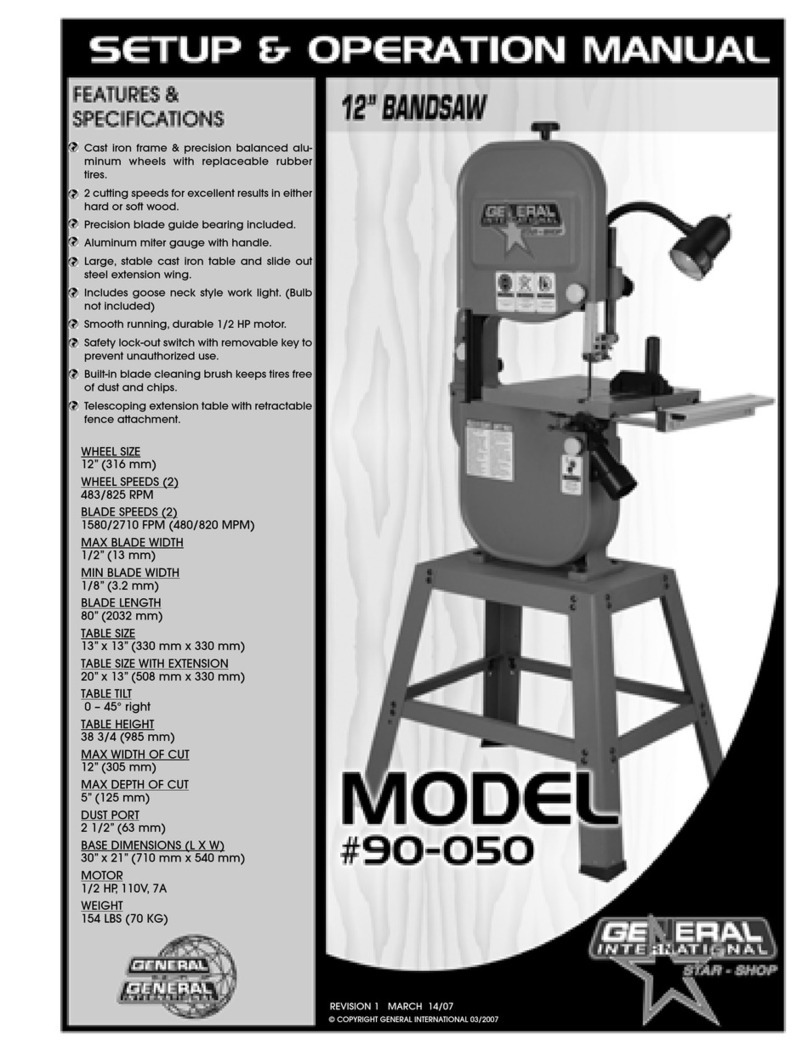
1. Do not operate the bandsaw when tired, distracted
or under the effects of drugs, alcohol or any medi-
cation that impairs reflexes or alertness.
2. The working area should be well lit, clean and free
of debris.
3. Keep children and visitors at a safe distance when
the sander is in operation; do not permit them to
operate the sander.
4. Childproof and tamper proof your shop and all
machinery with locks, master electrical switches
and switch keys, to prevent unauthorized or unsu-
pervised use.
5. Stay alert! Give your work your undivided attention.
Even a momentary distraction can lead to serious
injury.
6. ine particulate dust is a carcinogen that can be
hazardous to health. Work in a well-ventilated area
and whenever possible use a dust collector. Wear
face, eye, ear, respiratory and body protection
devices.
7. Do not wear loose clothing, gloves, bracelets,
necklaces or other jewelry while the bandsaw is in
operation.
8. Be sure that adjusting wrenches, tools, drinks and
other clutter are removed from the machine and/or
the table surface before operating.
9. Keep hands well away from the blade and all mo-
ving parts. Use a brush, not hands, to clear
away chips and dust.
10. Adjust and position upper and lower blade guides
before starting to cut. Upper blade guide should be
adjusted to approximately 1/8” above the material
to be cut.
11. Adjust blade tension and tracking before starting to
cut.
12. Saw teeth must point down toward the table.
13. Be sure that the blade has gained full operating
speed before starting to cut.
14. Always use a clean, properly sharpened blade.
Dirty or dull blades are unsafe and can lead to
accidents.
15. Use suitable work piece support if the work piece
does not have a flat surface.
16. Hold material firmly against the table.
17. Do not work on long stock without adequate sup-
port on the out feed end of the table.
18. If using a power feeder, stop the feeder before stop-
ping the bandsaw.
19. Do not push or force stock into the blade. The band-
saw will perform better and more safely when work-
ing at the rate for which it was designed.
20. Avoid working from awkward or off balance posi-
tions. Do not overreach and keep both feet on floor.
21. Keep guards in place and in working order. If a
guard must be removed for maintenance or clea-
ning be sure it is properly re-attached before using
the tool again.
22. Never leave the machine unattended while it is run-
ning or with the power on.
23. Use of parts and accessories NOT recommended
by Ge eral® I ter atio al may result in equip-
ment malfunction or risk of injury.
24. Never stand on machinery. Serious injury could re-
sult if the tool is tipped over or if the cutting tool is
unintentionally contacted.
25. Always disconnect the machine from the power
source before servicing or changing accessories
such as blades, or before performing any mainte-
nance or cleaning, or if the machine will be left un-
attended.
26. Make sure that the switch is in the “O ” position
before plugging in the power cord.
27. Make sure the tool is properly grounded. If equip-
ped with a 3 - prong plug it should be used with a
three-pole receptacle. Never remove the third prong.
28. Do not use this bandsaw for other than its intended
use. If used for other purposes, Ge eral® I ter a-
tio al disclaims any real implied warranty and
holds itself harmless for any injury, which may result
from that use.
Rules for Safe Operation
To help e sure safe operatio , please take a mome t to lear the machi e’s applicatio s a d limita-
tio s, as well as pote tial hazards. Ge eral® I ter atio al disclaims a y real or implied warra ty a d
hold itself harmless for a y i jury that may result from the improper use of it’s equipme t.

